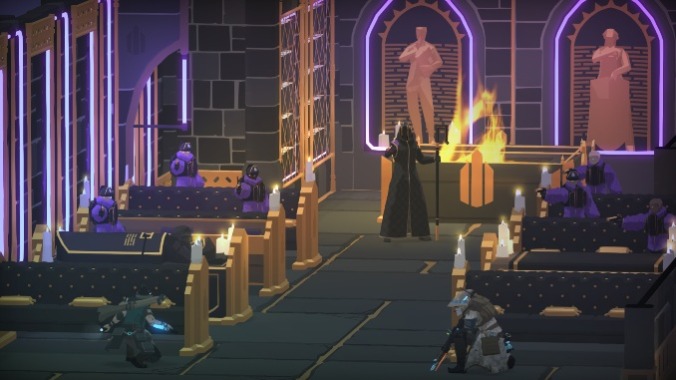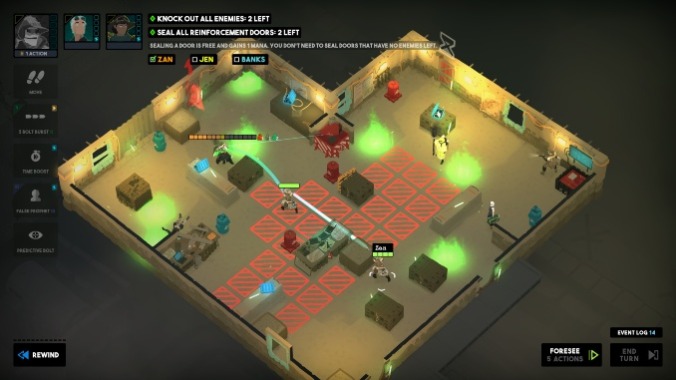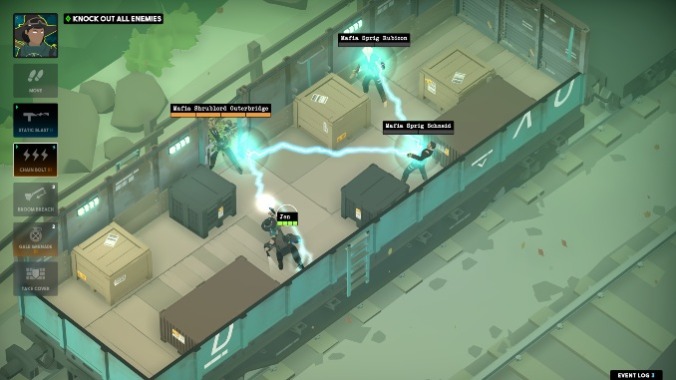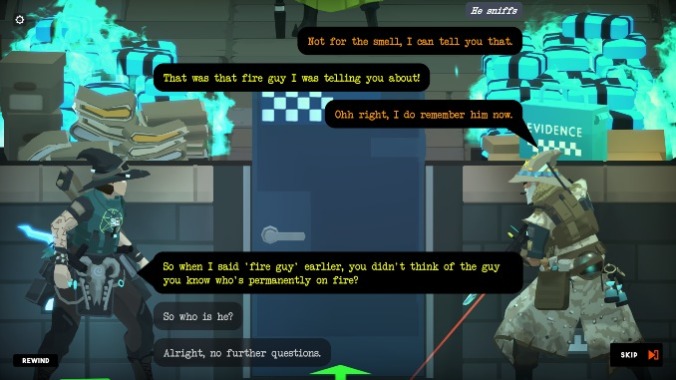Tactical Breach Wizards Is A Clever Strategy Game About Launching Guys Out Windows

Since XCOM: Enemy Unknown helped revive its parent series and a specific type of turn-based tactics game with it, there’s been no shortage of imitators in its mold, from Gears Tactics to the unlikely Mario + Rabbids titles. At first blush, Tactical Breach Wizards, the latest from Suspicious Developments (Gunpoint, Heat Signature), seems to be playing this sub-genre straight; it’s turn-based, you command a squad who move across a grid-based tile, it’s presented from an isometric perspective. But where the game differs is that instead of being stuffed to the brim with procedurally generated challenges and other uncertainties, it mimics the deterministic logic of something like Into the Breach, successfully emphasizing the latent puzzler elements found in tactics titles as its witty dialogue and satisfying storytelling round out this clean operation.
As for how the skirmishes pan out, much of Tactical Breach Wizards’ uniqueness comes from how every level and encounter feel hand-crafted to highlight the abilities of your ragtag crew (each of whom has unique magical powers), resulting in cerebral battles where you combine these skills in non-traditional ways. You start with two squad members: Jen, a storm witch who specializes in pushing people around the map with wind-based moves, and Zan, a former navy seer who can see slightly into the future and carries a non-lethal magic assault rifle. Up front, they synergize in some fairly obvious ways—Zan has an attack where he automatically fires at any opponent who crosses his sight line, while Jen can help trigger this by moving both Zan and your enemies around. This is just the tip of the iceberg, though, because as the story goes on, you gain access to many more techniques, upgrades, and teammates that will make you feel like a seasoned battlemage tactician as you set up devastating sequences. Oh, and you can use magic to push people out windows, which proves as satisfying the first time as the 100th.

While Zan uses a very straightforward weapon, a gun, basically every other member of your slowly expanding team deals damage in less traditional ways, whether it’s utilizing Jen’s wind magic to defenestrate foes, flattening people with your close-quarters bruiser, using a non-traditional medic’s toxins to stack up debuffs, or deploying a shrubmage assassin to delete high-armor adversaries. They each start with only a few moves, but you gain new ones and strengthen them as the story progresses, allowing you to customize combatants somewhat. For instance, I went all in on powering up Zan’s passive upgrade that lets him perform follow-up shots after his teammates’ attacks, allowing him to perform screen-wipe turns that felt even more gratifying because I specifically built my character in this direction.
This kind of involved combo is central to the game’s flow, and I frequently found myself putting together intricate sequences that felt downright magical. Each turn, all of your characters get to move and perform an action. Some abilities spend action points, others spend mana (you start with one charge and can find more around the map), many use both, and a few don’t require resources but have limited uses per fight. However, where things quickly get zany is that your crew can learn techniques that allow them to refund these resources or maneuver without their movement action, enabling increasingly involved decision-making.
Combined with the fact that you can see exactly what your opponents will do on their turn because of Zan’s seer abilities and freely rewind your actions to the beginning of the turn, you’re given the control to orchestrate precise missions. A good example is how the melee character Dell has a charge attack that sends her across the map in a straight line, and if it connects, she can perform another one. When paired with similar skills, it can set up single-turn wins that make you feel like a genius general.
It helps that each battle feels designed around these abilities, and the story mode constantly introduces different team configurations, new enemy types, and stage setups that force you to think up fresh strategies. In short, unlike the more randomized (and admittedly more replayable) battles found in most of its genre peers, these skirmishes are twisty puzzles that are a joy to crack.

-

-

-

-

-

-

-

-

-

-

-

-

-

-

-

-

-

-

-

-

-

-

-

-

-

-

-

-

-

-

-

-

-

-

-

-

-

-

-

-









































